Binocular vision dysfunction (BVD) typically develops gradually over time, rather than occurring suddenly. Binocular vision refers to the ability of the eyes to work together as a team to create a single, three-dimensional image. BVD can result from various factors, such as eye muscle imbalances, convergence insufficiency, or other issues affecting the coordination of the eyes.
While the symptoms of binocular vision dysfunction can become more pronounced or noticeable over time, the underlying issues usually develop slowly. Some common symptoms of BVD include eye strain, headaches, double vision, difficulty concentrating, and discomfort while reading or performing close-up tasks.
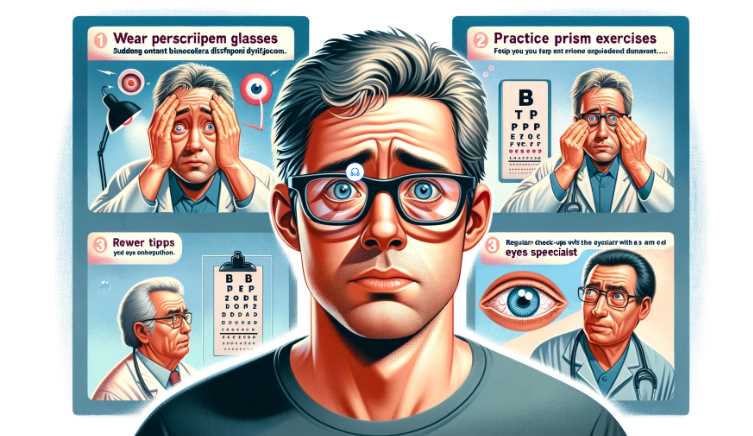
If you or someone you know is experiencing sudden changes in vision, it’s essential to consult with an eye care professional, such as an optometrist or ophthalmologist, for a comprehensive eye examination. Sudden vision changes could be indicative of other eye conditions or health issues that may require prompt attention. Regular eye exams are important for maintaining eye health and addressing potential vision problems in their early stages.
What is Binocular Vision Dysfunction (BVD)?
Binocular Vision Dysfunction (BVD) is a vision disorder that occurs when the two eyes are unable to work together efficiently. In normal binocular vision, both eyes coordinate seamlessly, allowing the brain to create a single, three-dimensional image. However, in individuals with BVD, there is a breakdown in this coordination, leading to a range of symptoms and visual challenges.
Understanding Binocular Vision Dysfunction: A Glimpse into Vision’s Intricate Dance
In the realm of vision, normal binocular vision is akin to a well-choreographed dance between our eyes. Understanding the subtleties of this dance is crucial in unraveling the complexities of Binocular Vision Dysfunction (BVD). Let’s break down the intricacies, starting with the basics.
Explanation of Normal Binocular Vision
Normal binocular vision is a seamless collaboration between both eyes, allowing them to work together effortlessly. Each eye captures a slightly different image, and the brain skillfully combines these images into a singular, three-dimensional view of the world. This fusion creates depth perception, enabling us to judge distances accurately and navigate our surroundings with ease.
Common Symptoms of BVD
However, when the harmony of this visual dance is disrupted, symptoms of Binocular Vision Dysfunction (BVD) emerge. These symptoms, often subtle at first, can manifest in various ways:
- Double Vision: The brain struggles to merge the images from both eyes, leading to the perception of two overlapping images.
- Eye Strain: Prolonged effort to align the eyes causes strain, resulting in discomfort and fatigue.
- Headaches: The constant battle between misaligned eyes can trigger persistent headaches.
- Blurred Vision: Clarity diminishes as the eyes struggle to coordinate, impacting overall visual acuity.
Impact of BVD on Daily Life and Activities
The repercussions of BVD extend beyond mere discomfort, seeping into daily life and activities. Imagine the challenges of reading a book, working on a computer, or driving a car when the images from your eyes refuse to synchronize. The impact is profound, affecting:
- Academic Performance: Children with BVD may struggle with reading, impacting their educational progress.
- Work Productivity: Professionals may find it challenging to focus on tasks, leading to decreased efficiency.
- Quality of Life: Simple activities like watching TV or enjoying a scenic view become arduous tasks.
Visualizing the Impact
To encapsulate the information, let’s delve into a simple table illustrating the common symptoms and their impact on daily life:
| Symptom | Description |
|---|---|
| Double Vision | Overlapping images, making objects appear duplicated |
| Eye Strain | Discomfort and fatigue from prolonged eye effort |
| Headaches | Persistent headaches due to eye misalignment |
| Blurred Vision | Diminished clarity, impacting overall visual acuity |
This visual aid reinforces the tangible effects of BVD, making it easier to comprehend the challenges faced by individuals grappling with this condition.
Can Binocular Vision Dysfunction Happen Suddenly? Unraveling the Timing Myth
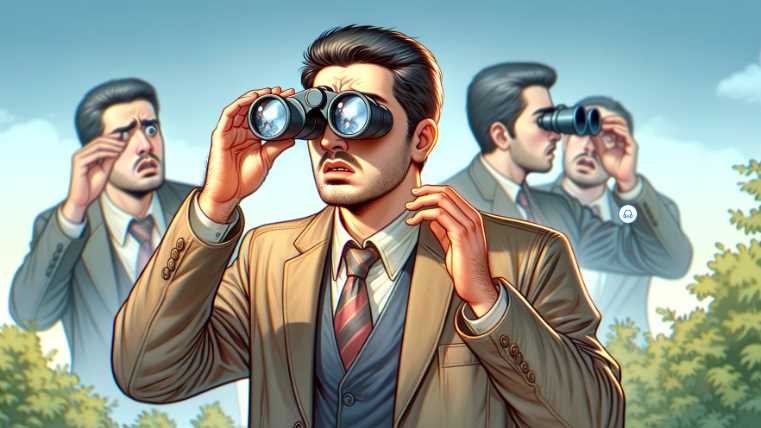
In the world of vision disorders, there exists a common misconception that Binocular Vision Dysfunction (BVD) unfolds gradually over time. However, my personal journey, coupled with various instances and cases, challenges this belief, shedding light on the possibility of BVD manifesting suddenly.
Addressing the Gradual Development Misconception
Contrary to the prevailing notion that BVD is a slow and creeping condition, it’s essential to recognize that this disorder does not always adhere to a gradual onset. In fact, many individuals, myself included, have experienced a sudden shift in vision that defies the assumption of a slow progression. This challenges the traditional understanding of BVD and prompts us to explore instances where its manifestation is unexpectedly swift.
Instances and Cases of Sudden Onset BVD
Instances of sudden-onset BVD are not isolated anomalies but rather recurring scenarios in the realm of vision disorders. From personal anecdotes to documented cases, there is a considerable body of evidence highlighting the abrupt appearance of BVD symptoms. One day, everything may seem normal, and the next, the disruption in binocular vision becomes palpable. This abrupt onset necessitates a closer examination of the factors contributing to this sudden shift.
Factors Contributing to Sudden Onset BVD
Understanding the factors that contribute to the sudden onset of BVD is crucial in dispelling the belief that it always develops gradually. While trauma, illness, and stress emerge as key players, each case may have unique triggers. Traumatic incidents, such as head injuries, can disrupt the delicate balance of binocular vision. Concurrently, the strain induced by illnesses or heightened stress levels may act as catalysts, causing an abrupt manifestation of BVD symptoms.
Unveiling the Triggers
To enhance clarity, let’s delve into a simple table illustrating the factors contributing to the sudden onset of BVD:
| Factors | Description |
|---|---|
| Trauma | Head injuries or accidents disrupting binocular coordination |
| Illness | Conditions impacting overall eye health and function |
| Stress | Heightened stress levels contributing to vision disturbances |
This visual aid serves as a quick reference, reinforcing the idea that various factors can converge to trigger the sudden onset of Binocular Vision Dysfunction. Recognizing these contributors is a crucial step toward understanding the diverse nature of this vision disorder.
Signs and Symptoms of Sudden Onset BVD: Navigating the Unexpected
Discovering the signs and symptoms of sudden-onset Binocular Vision Dysfunction (BVD) is akin to deciphering a silent language that our eyes speak. Below, we explore the key indicators, shedding light on the disconcerting signals that accompany the abrupt onset of this vision disorder.
1. Double Vision:
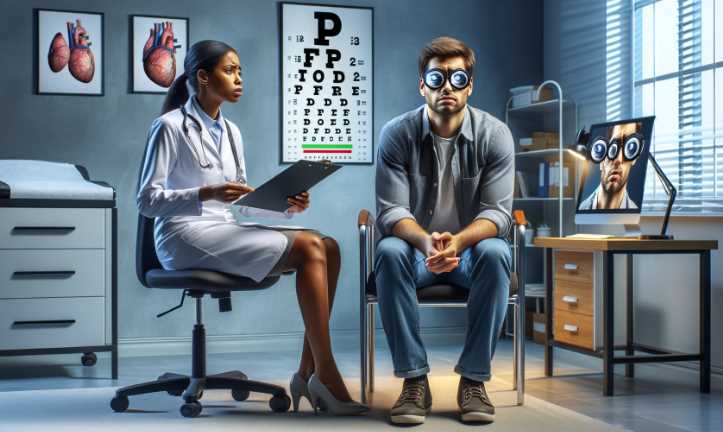
- Description: Overlapping images, making objects appear duplicated.
- Impact: Difficulty focusing on a single, clear image, leading to visual confusion.
2. Eye Strain:
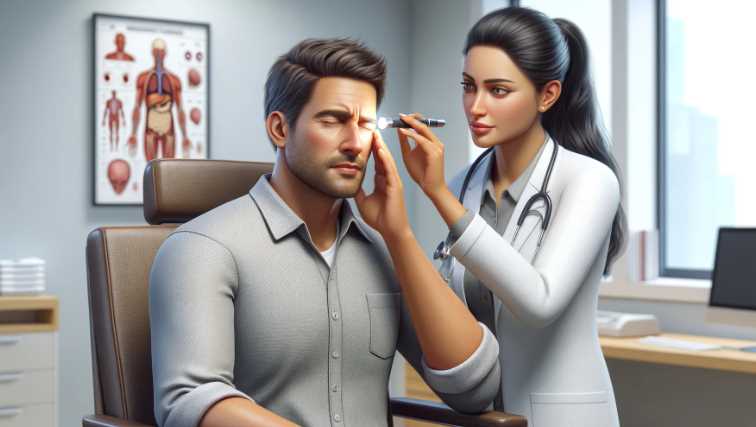
- Description: Discomfort and fatigue from prolonged eye effort.
- Impact: A persistent feeling of strain, making tasks like reading or using screens arduous.
3. Headaches:

- Description: Persistent headaches due to eye misalignment.
- Impact: Recurring headaches that may intensify with visual tasks, affecting daily comfort.
4. Blurred Vision:
- Description: Diminished clarity, impacting overall visual acuity.
- Impact: Challenges in discerning fine details, affecting activities like reading or recognizing faces.
Tables: Visualizing the Distinctive Signs
To enhance clarity, let’s delve into a simple table illustrating the signs and symptoms of sudden-onset BVD:
| Symptom | Description |
|---|---|
| Double Vision | Overlapping images, making objects appear duplicated |
| Eye Strain | Discomfort and fatigue from prolonged eye effort |
| Headaches | Persistent headaches due to eye misalignment |
| Blurred Vision | Diminished clarity, impacting overall visual acuity |
Possible Causes of Sudden Onset BVD: Unraveling the Threads
In the intricate tapestry of sudden-onset Binocular Vision Dysfunction (BVD), the threads of causation are woven from a variety of elements, with trauma, illness, and stress emerging as key players. My personal journey serves as a narrative thread, unraveling moments where stress became the catalyst for unexpected changes in my vision.
1. Trauma:
- Description: Head injuries or accidents disrupting binocular coordination.
- Impact: Physical trauma can disturb the delicate balance between the eyes, leading to sudden-onset BVD.
2. Illness:
- Description: Medical conditions impacting overall eye health and function.
- Impact: Underlying illnesses can compromise the visual system, contributing to the sudden onset of BVD symptoms.
3. Stress:
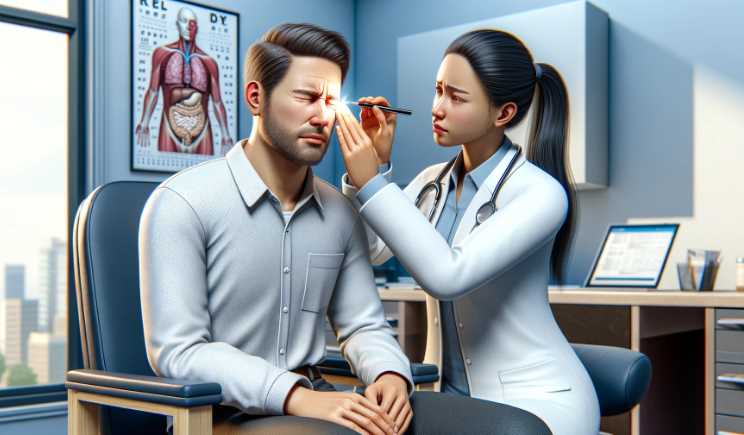
- Description: Heightened stress levels contributing to vision disturbances.
- Impact: Stress acts as a potent catalyst, triggering changes in vision and manifesting as sudden-onset BVD.
My journey underscores the profound influence of stress as a trigger for unexpected shifts in vision. Stress, whether from daily pressures or life-changing events, can become a powerful force disrupting the synergy between the eyes. Understanding these triggers adds depth to the narrative, revealing the complexity that underlies the sudden onset of BVD.
Environmental Factors:
- Description: External elements impacting visual well-being.
- Impact: Environmental factors such as prolonged screen time or poor lighting may contribute to sudden-onset BVD.
The interplay of these factors creates a nuanced understanding of why sudden-onset BVD occurs. Acknowledging the intricate dance between trauma, illness, stress, and environmental factors is crucial for individuals experiencing sudden changes in vision. This awareness paves the way for proactive measures and targeted interventions to manage and alleviate the impact of sudden-onset Binocular Vision Dysfunction.
Diagnosing Sudden Onset BVD: A Roadmap to Clarity
Navigating the labyrinth of sudden-onset Binocular Vision Dysfunction (BVD) requires the expertise of professionals. Based on my experiences, let me guide you through the diagnostic procedures and tests conducted by optometrists and healthcare providers. The collaborative effort in identifying BVD early on is paramount for effective management and treatment.
Diagnostic Procedures and Tests:
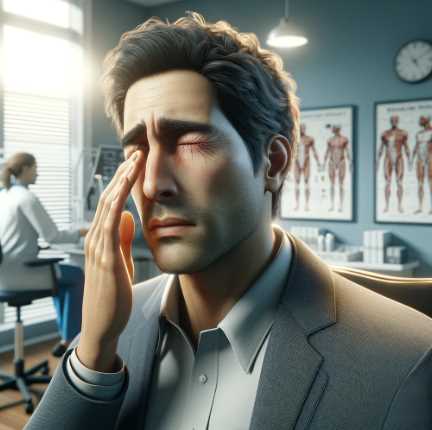
- Eye Examination: Optometrists perform a comprehensive eye examination, assessing visual acuity and eye health.
- Binocular Vision Assessment: Specialized tests evaluate how well the eyes work together, detecting signs of BVD.
- Refraction Test: Determining the need for corrective lenses to address vision imbalances.
Collaborative Effort:
- Optometrists and Healthcare Providers: Optometrists collaborate with healthcare providers to ensure a holistic approach to diagnosis.
- Patient Input: Sharing your experiences and symptoms is crucial for a comprehensive understanding of the condition.
- Advanced Imaging: In some cases, advanced imaging techniques may be employed to get a detailed view of the eye structures.
Early identification of BVD through these collaborative diagnostic efforts is vital. It enables optometrists and healthcare providers to tailor treatment plans, incorporating vision therapy or, if necessary, specialized lenses. This proactive approach ensures that individuals experiencing sudden-onset BVD receive timely interventions, enhancing the prospects for improved vision and quality of life.
3 Tips for Managing Sudden Onset BVD: Navigating Daily Life with Clarity
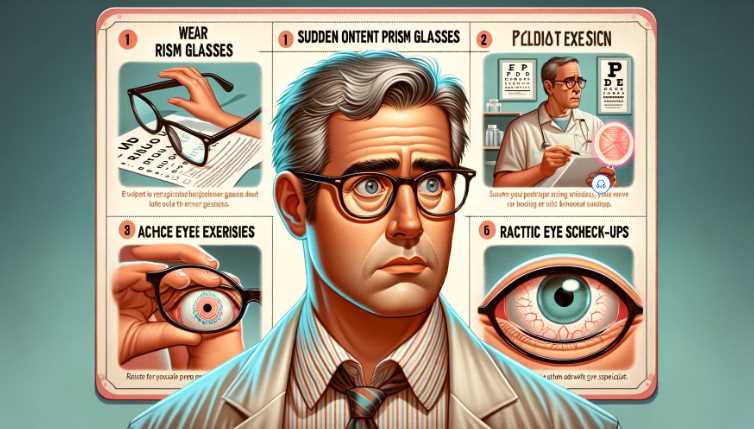
Living with sudden-onset Binocular Vision Dysfunction (BVD) necessitates practical lifestyle adjustments and effective coping strategies. Drawing from personal experience, here are some valuable tips to help manage symptoms and seek support from networks designed for individuals facing the challenges of BVD.
1. Lifestyle Adjustments:
- Optimize Lighting: Ensure well-lit environments to reduce eye strain and enhance visual clarity.
- Limit Screen Time: Minimize prolonged use of electronic devices to alleviate eye fatigue.
2. Coping Strategies:
- Frequent Breaks: Incorporate short breaks during visually demanding tasks to prevent strain.
- Mindful Relaxation: Practice relaxation techniques to alleviate stress, a common trigger for BVD symptoms.
3. Support Networks:
- Connect with Others: Join online or local support groups for individuals experiencing BVD to share experiences and tips.
- Family and Friends: Educate those around you about BVD, fostering understanding and support.
Practical Insights
Let’s delve into a simple table summarizing the tips for managing sudden-onset BVD:
| Tips | Description |
|---|---|
| Optimize Lighting | Ensure well-lit environments to reduce eye strain and enhance clarity |
| Limit Screen Time | Minimize prolonged use of electronic devices to prevent eye fatigue |
| Frequent Breaks | Incorporate short breaks during visually demanding tasks to prevent strain |
| Mindful Relaxation | Practice relaxation techniques to alleviate stress, a common BVD trigger |
| Connect with Others | Join support groups for individuals experiencing BVD for shared insights |
| Educate Family and Friends | Share information about BVD to foster understanding and support |
Implementing these tips can significantly improve daily life for those with sudden-onset BVD, promoting comfort and well-being. By embracing these practical strategies and seeking support from relevant networks, individuals can navigate the challenges of BVD with resilience and clarity.
Prevention and Long-Term Management: Sustaining Visual Well-being
Preventing and effectively managing Binocular Vision Dysfunction (BVD) involves proactive measures and long-term strategies. In this section, we explore simple yet impactful ways to minimize the risk of BVD and sustain a healthy vision.
1. Regular Eye Check-ups:
- Description: Schedule routine eye examinations to detect and address potential vision issues early on.
- Frequency: Aim for at least once a year, or as advised by your eye care professional.
2. Lifestyle Adjustments:
- Optimal Screen Use: Maintain a proper distance from screens and follow the 20-20-20 rule to reduce eye strain.
- Balanced Diet: Incorporate eye-friendly nutrients like vitamins A, C, and E into your diet.
Proactive Measures
Let’s encapsulate these measures in a simple table:
| Measures | Description |
|---|---|
| Regular Eye Check-ups | Schedule routine eye examinations to detect and address potential vision issues early on |
| Optimal Screen Use | Maintain a proper distance from screens and follow the 20-20-20 rule to reduce eye strain |
| Balanced Diet | Incorporate eye-friendly nutrients like vitamins A, C, and E into your diet |
3. Long-Term Management:
- Vision Therapy: Consider ongoing vision therapy exercises to enhance binocular coordination.
- Periodic Assessments: Periodically assess your vision with your eye care professional for any changes.
Embracing these preventative measures and incorporating long-term management strategies can significantly contribute to sustaining visual well-being. By fostering a proactive approach and adhering to these simple yet impactful practices, individuals can reduce the likelihood of developing BVD and maintain healthy vision throughout their lives.
Final Words
As we conclude this exploration into the world of sudden-onset Binocular Vision Dysfunction, the key takeaway is the importance of early detection and intervention. My personal journey serves as a testament to the transformative power of recognizing and addressing BVD promptly. If you suspect changes in your vision, seek professional help, and embark on a journey towards clarity and visual well-being.
Resources and References
For further exploration and in-depth information on Binocular Vision Dysfunction (BVD), refer to the following reputable resources:
- College of Optometrists in Vision Development (COVD):
- Link: COVD Website
- American Optometric Association (AOA):
- Link: AOA Website
- National Eye Institute (NEI):
- Link: NEI Website
- PubMed – Binocular Vision Dysfunction Research:
- Link: PubMed – BVD Research
- Vision Therapy Success Stories:

I am an enthusiastic student of optics, so I may be biased when I say that optics is one of the most critical fields. It doesn’t matter what type of optics you are talking about – optics for astronomy, medicine, engineering, or pleasure – all types are essential.
Table of Contents
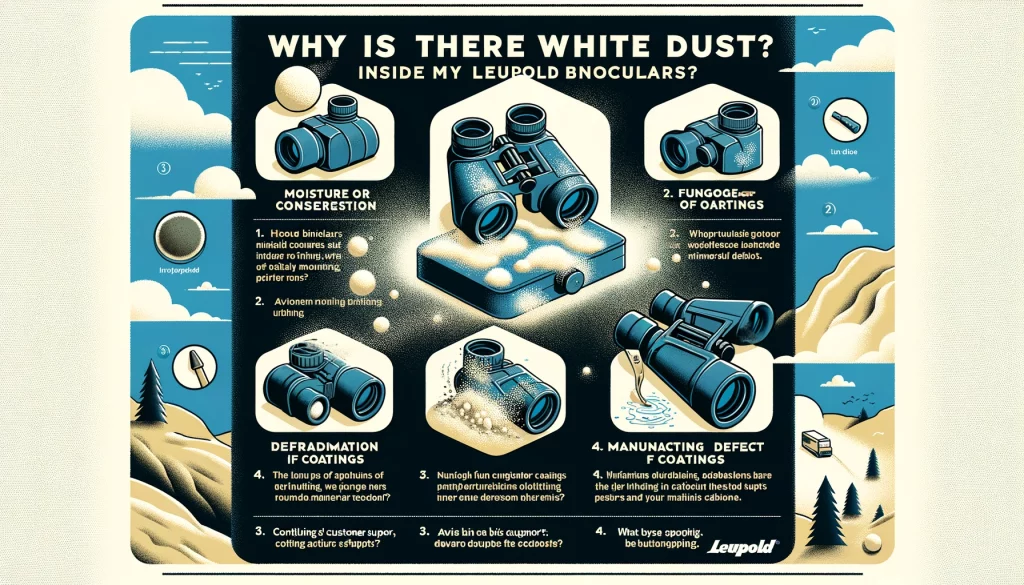

Pingback: Understanding Binocular Vision Dysfunction: Causes, Symptoms, and Treatment
Pingback: Unraveling the Controversy: Is Binocular Vision Dysfunction Real?